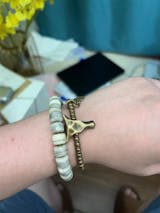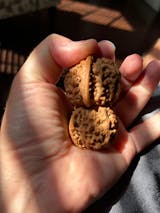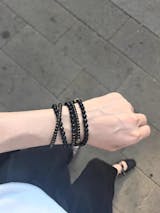Drashi Lhamo and the Sacred Blessings of Zaki Temple
Introduction
Located on Zaki Road in the northern outskirts of Lhasa, there is a small but prosperous temple that attracts a steady stream of visitors every Wednesday—Zaki Temple. It is the only temple in Tibet dedicated to the Wealth God, and despite its modest size, it is renowned for its thriving incense offerings. The name of this temple and the story behind it are filled with mystery and legend.

The Origin of Zaki Temple
The name "Zaki" is derived from its humble origins, when the temple was initially managed by just four monks. In the Tibetan language, "Zhaba" means monk, while "Ki" is a variant of the number "4." Therefore, Zaki Temple means "the temple with four monks." Originally, Zaki Temple was established as a local community service temple for the Gelugpa sect of Tibetan Buddhism, under the guidance of monks from the Sera Monastery.
The temple’s main deity is Drashi Lhamo, who is considered the earthly incarnation of the protector goddess of Lhasa, "Jixiang Tianmu" (Auspicious Heavenly Mother). According to legend, Drashi Lhamo originated in Han China, and later, a monk from Sera Monastery brought her idol to Lhasa, where it was enshrined in Zaki Temple. Initially, the temple was established to pray for the safety of outsiders, especially businesspeople. Over time, it became known as the temple of the Wealth God due to its effectiveness in bringing prosperity to those who prayed there.

Drashi Lhamo: The Protector Goddess of Wealth
In Tibetan Buddhist lore, Drashi Lhamo is categorized as a worldly protector deity. Unlike other gods who have transcended the mortal realm, Drashi Lhamo still maintains a deep connection with human beings. As a result, she often manifests in human form to interact with mortals. Drashi Lhamo is believed to be incredibly powerful, and many people visit the temple each Wednesday to offer prayers for business success and family safety.
In the main hall of the temple, visitors present their offerings—often bottles of alcohol and khatas (ceremonial scarves)—before the idol of Drashi Lhamo. A monk then pours the alcohol into a large urn, and many believe this ritual brings blessings of prosperity. This unique ceremony is one of the distinguishing features of Zaki Temple and has drawn many devotees and tourists alike.
The Legendary Tale of Drashi Lhamo
There is a captivating legend surrounding Drashi Lhamo. It is said that many years ago, a high monk from Sera Monastery traveled to Mount Wutai for a pilgrimage. During the same period, a beautiful concubine of Emperor Qianlong in the Qing Dynasty was poisoned to death in a palace power struggle. Her restless soul haunted the palace, seeking revenge. Fearing the unrest, Emperor Qianlong invited the high monk to Mount Wutai.
Upon arriving at the palace, the monk discovered the concubine’s spirit wandering in sorrow. After entering a meditative trance, the monk communicated with her spirit and learned of her tragic story. The monk informed the emperor of the situation, and the emperor punished the perpetrators. He also invited the monk to perform a ritual to release the spirit. However, on his return journey, the monk discovered that the concubine's spirit was still following him, expressing a desire to convert to Buddhism. Despite the harsh journey, the monk was moved by her sincerity and agreed to bring her to Lhasa.
When they arrived at Sera Monastery, the monk explained that the concubine could not enter the monastery but could be enshrined in Zaki Temple. The spirit of the concubine agreed, and a small temple was constructed in her honor, along with the creation of her idol. A "demon-subduing" ceremony was held, and she was named Drashi Lhamo.

Drashi Lhamo's "Chicken Foot" Iconography
Drashi Lhamo is often depicted in Thangka paintings, where her image is striking and unique. She is shown with dark skin, a long tongue, and chicken-like feet. This distinctive image is tied to another part of her legend. During her time of practice, Drashi Lhamo was poisoned by a jealous demoness. Despite the poison, Drashi Lhamo used her powers to expel the toxins from her body, though the poison remained stuck in her tongue, preventing her from retracting it.
When the demoness saw that her poison had not worked, she took advantage of the situation and severed Drashi Lhamo's feet. Miraculously, Drashi Lhamo grew new feet resembling those of a chicken. As a result, Drashi Lhamo is also known as the "Chicken Foot Goddess."
Today, Drashi Lhamo’s iconography symbolizes strength in the face of adversity. Her story of enduring hardship and remaining kind, brave, and unwavering continues to inspire people. Although she is worshipped as the Wealth God, her story is one of perseverance and defiance against fate. Drashi Lhamo’s life serves as a reminder that with steadfast determination, luck and fortune will follow.
Conclusion
Zaki Temple is not just a religious site in Lhasa; it is a place filled with fascinating stories and rich history. While not one of the Five Wealth Gods, Drashi Lhamo is Tibet's only female Wealth God. Her legend teaches us about resilience and the importance of persevering through difficult times. Her story continues to inspire countless devotees and visitors, reminding them to stay strong, face challenges head-on, and never give up. Zaki Temple, along with the spirit of Drashi Lhamo, remains an enduring symbol of hope, strength, and prosperity for all who seek her blessings.
Related articles:
Five Wealth Gods in Tibetan Buddhism: Welcoming Prosperity in the New Year
Green Tara Thangka in Tibetan Buddhism
Key Figures in Mahayana Buddhism: Amitabha Buddha, Shakyamuni Buddha, and Avalokiteshvara

































